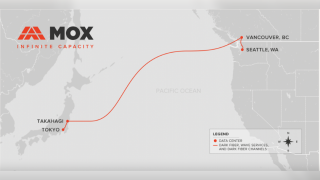EASSy will interconnect with international submarine cable networks at Mtunzini, Mombasa, Djibouti and Port Sudan, and claims that agreements with international cable operators will allow diverse, seamless onward connectivity to Europe, the Americas, the Middle East and Asia.
The continent’s biggest cable, EASSy is making real waves with its investors, both domestic and international. The cable is mostly African-owned, with the biggest tranche of investment coming from the WIOCC consortium. WIOCC numbers 14 African telecos among its members, as well as global names like Bharti airtel, France Telecom, BT and Etisalat.
“When you light capacity on a system, as we did in July 2010, you do not want to do too much at one time because the cost of lighting capacity on a system comes down as the cost of technology goes up,” said Chris Wood, CEO at WIOCC and co-chair of the EASSy management committee. “Even with this upgrade we could only use the technology for 18 months, because 100Gbps wavelengths could be available by then.”
EASSy is the only cable on the African coast to be built on the ‘collapsed ring’ model, intended to minimise the impact of cable cuts and equipment and branch failure. It enables internal protection routing, minimising outage time to a few seconds if there is a system failure. As the consortium also offers “alternative terrestrial routes” via the networks of its members, EASSy claims its system is designed for resilience.
It is no real surprise that demand for EASSy has developed so rapidly, according to Alan Mauldin, research director at analyst firm TeleGeography: “Even with Seacom in service, operators are keen to have capacity on both cables because of the diversity it provides,” he said. “TEAMS only links Kenya to the UAE, so it is not really much of a factor outside of Kenya.” He argues that the Seacom and EASSy cables are complementary, and that operators would naturally target capacity on both systems.
Wood believes that EASSy holds the advantage over its competitors considering its investment base in all of the regions it has landing points, including Kenya, Tanzania and Uganda. “It is easier to use EASSy, and people have realised this. Our biggest challenge has been keeping up with rising demand.”
Demand for better connectivity continues to rise with the proliferation of the smartphone and the falling price of mobile data services: “Demand is rapidly increasing, compared to projections set by analysts,” added Wood. “The roll out of local networks, particularly in fibre and WiMAX, has accelerated more than people realise. In Nairobi, Kenya, in particular, there are multiple fibre networks around the city and at least five national backbones connecting the latest transit in the country.”
Investors are constructing terrestrial fibre backhauls to link the EASSy cable to landlocked countries in the region. The project aims to build a “comprehensive mesh of onward connectivity” which will allow access to high-speed international networks and stimulate economic development. Large cities aside, however, Africa still suffers from a lack of connectivity in inland regions.
Both Seacom and EASSy claim that it is part of their long-term approach to address this deficit. “The key is to wait until the technology is optimal and the upgrade is necessary, enabling the network to expand to more inland countries which do not have access to broadband yet,” said Aidan Baigrie, head of business development at Seacom. “EASSy’s upgrade has not affected us in any way, as we can almost immediately quadruple capacity on this network. As more cables come on stream, we expect prices to continue to drop.”
With the $600 million funded West African Cable System (WACS) due to launch later this year, West Africa will also have access to faster connectivity and better infrastructure. WACS will provide another link between South Africa and Europe “and provide new connectivity to several west African countries that presently only have access to the older SAT-3 cable,” added Mauldin.




